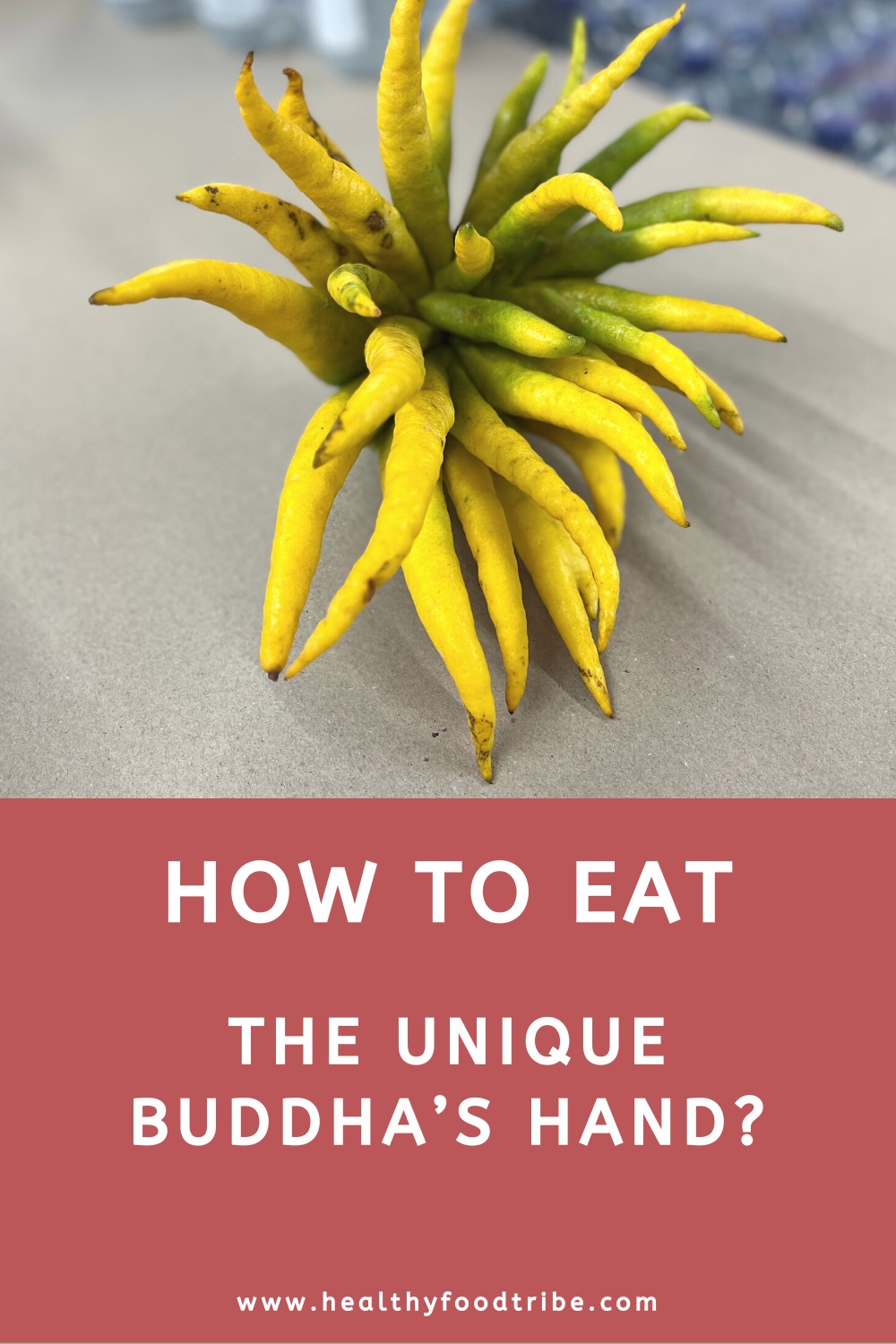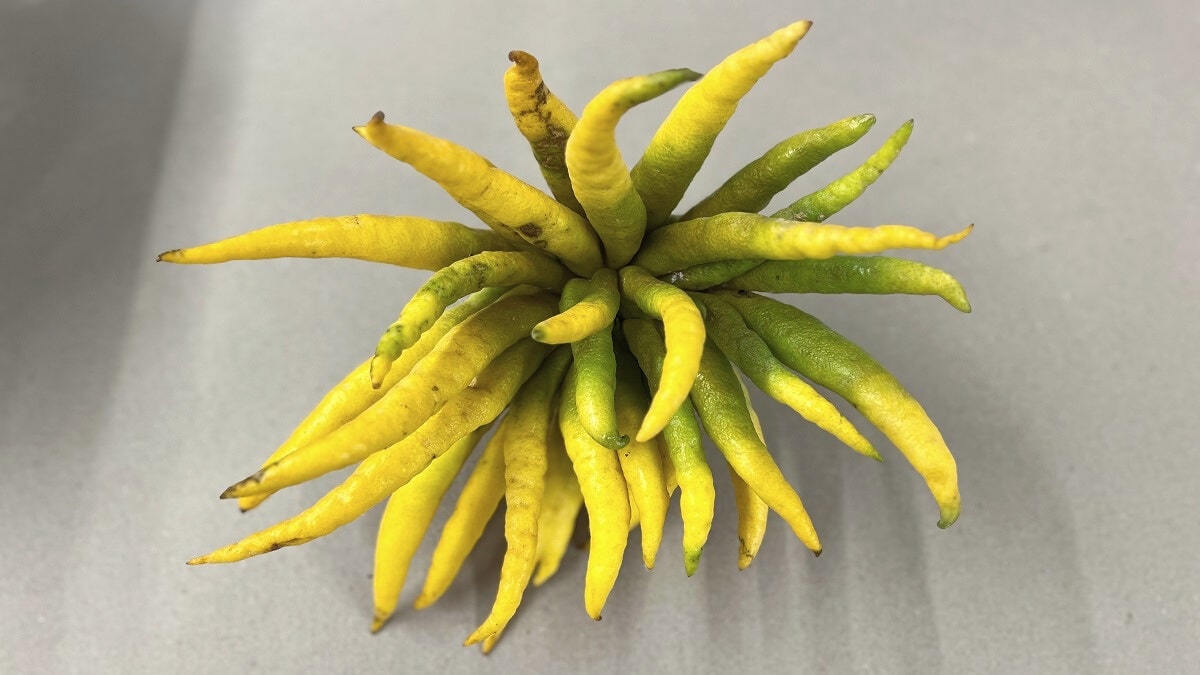Last updated: March 18, 2024
What is Buddha’s hand, and how should we prepare and eat it? This guide explains everything we can do with this unique citrus fruit.
There truly is no more unique-looking fruit in the world than Buddha’s hand citron. Not only does this squid-like citrus look different from every other fruit, but no individual Buddha’s hand looks the same as the next.
With a shape like nothing else, many wonder, how on earth are you supposed to cut and eat this fruit? Luckily, it’s not nearly as hard as it looks.
Below, I’ll provide my step-by-step guide on how to cut and eat Buddha’s hand citron. I will also give you some tips for storing and using this unique fruit to get the most out of the experience.
How to Eat Buddha’s Hand
Before I explain how best to prepare and eat a Buddha’s hand fruit, let’s first take a closer look at what this fruit actually is.
What Is a Buddha’s Hand?
Buddha’s hand, also known as fingered citron fruit, is an ancient citrus variety hailing from India. It gets its name from the many finger-like segments extending from the base of the fruit. These fingers give the fruit a look similar to the hands on the symbol of the Buddha during prayer.
This fruit tree symbolizes good fortune, longevity, and happiness. In many Asian cultures, the fruit is used as an offering during religious ceremonies. As you can imagine, it is most closely associated with Buddhism.
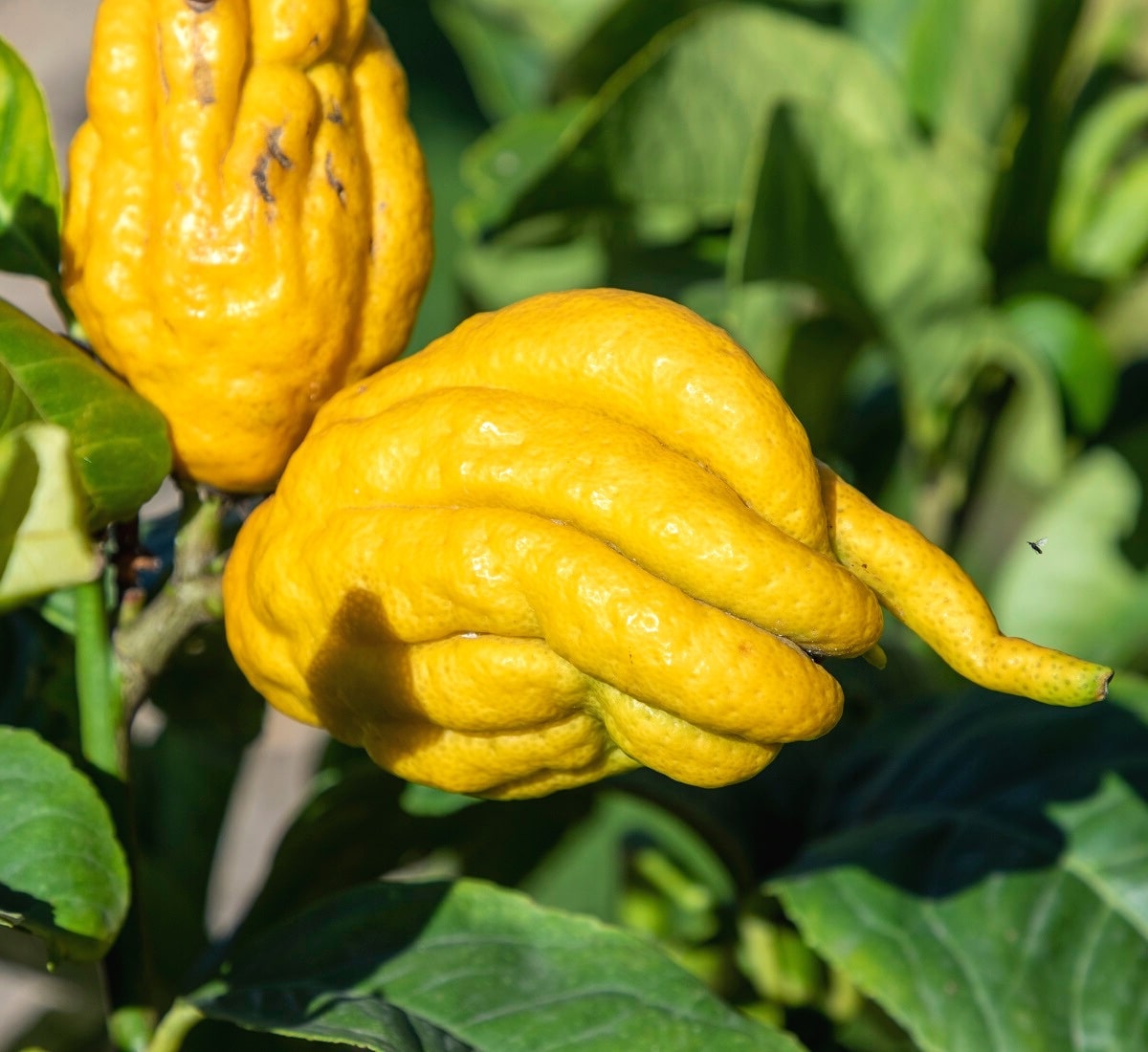
In fact, it was the Buddhists who spread this unusual fruit from India to China thousands of years ago.
Today, you can find Buddha’s hand growing in temperate climates throughout the world, including the Mediterranean, the Middle East, California, and Japan.
Buddha’s Hand Varieties
There are more than a dozen varieties of Buddha’s hand. These fall into three distinct categories:
- Open-fingered
- Closed-fingered
- Half-fingered
The open-fingered fruits very much resemble a squid when ready to eat. Many long, tentacle-like lobes extend from a small base. As these fruits ripen, the finger lobes separate, and the ends turn outward.
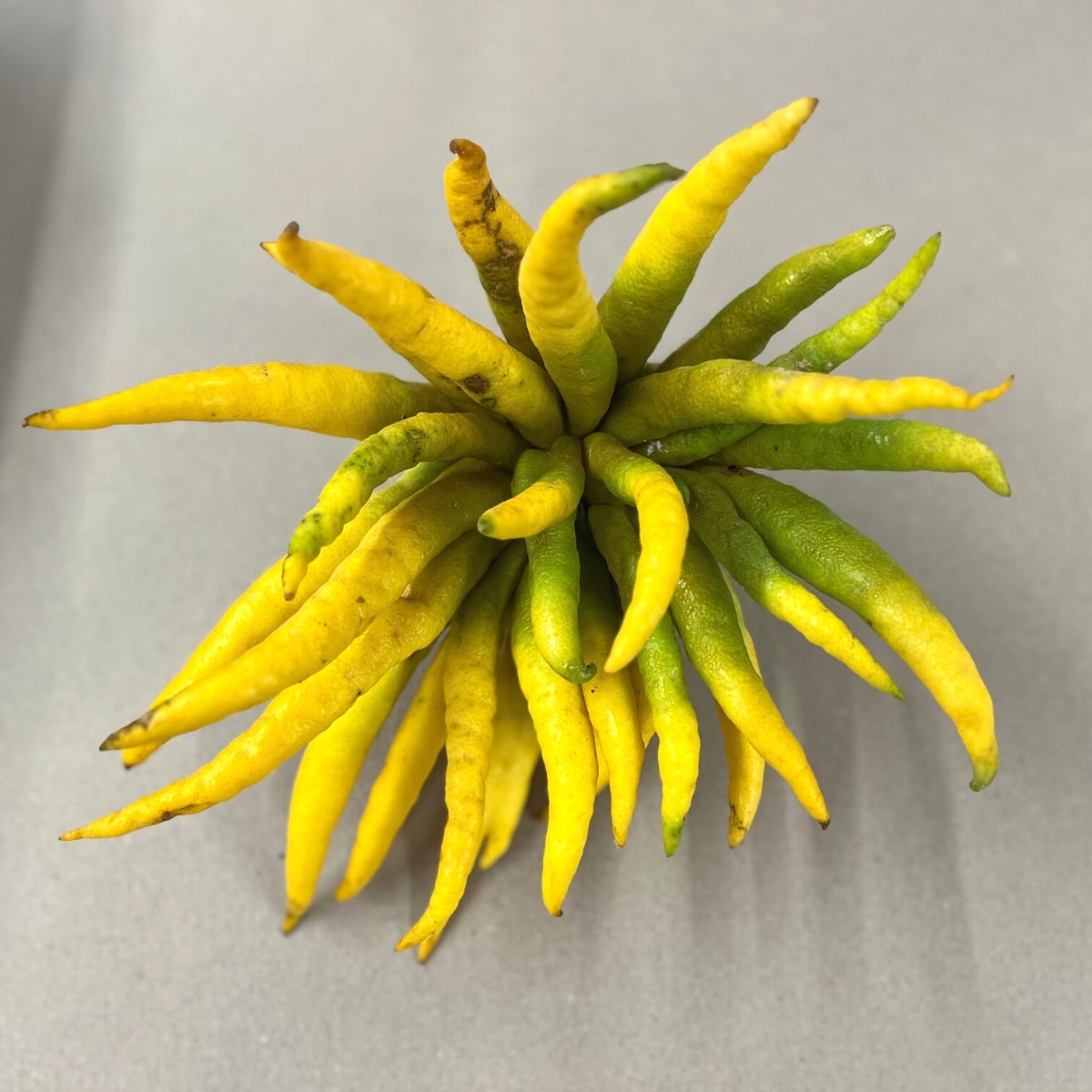
Closed-fingered fruits have deep ridges between the lobes down most of the length of the fruit. But these fingers are only completely separated at the very end. These “fingertips” tend to curl inward and remain that way even after the fruit is fully ripe.
Half-fingered Buddha’s hand fruits are typically the hardest to find. The separated finger lobes on these citrons begin about halfway down the fruit, providing a good chunk of solid pith on the stem end. Like closed-fingered varieties, the fingers on these tend to stay tight and inward-pointing even as the fruit ripens.
Taste and Fragrance
Uniquely, this citron contains no pulp or juice and rarely contains seeds. Most of the plants grown today are propagated through grafting. It is possible to find and plant Buddha’s hand seeds, but you’d have to be very lucky, indeed.
This fruit is most commonly used for its intense citrus-lavender fragrance. In China and Japan, it is used as a decorative, natural air freshener for rooms and to perfume clothing.
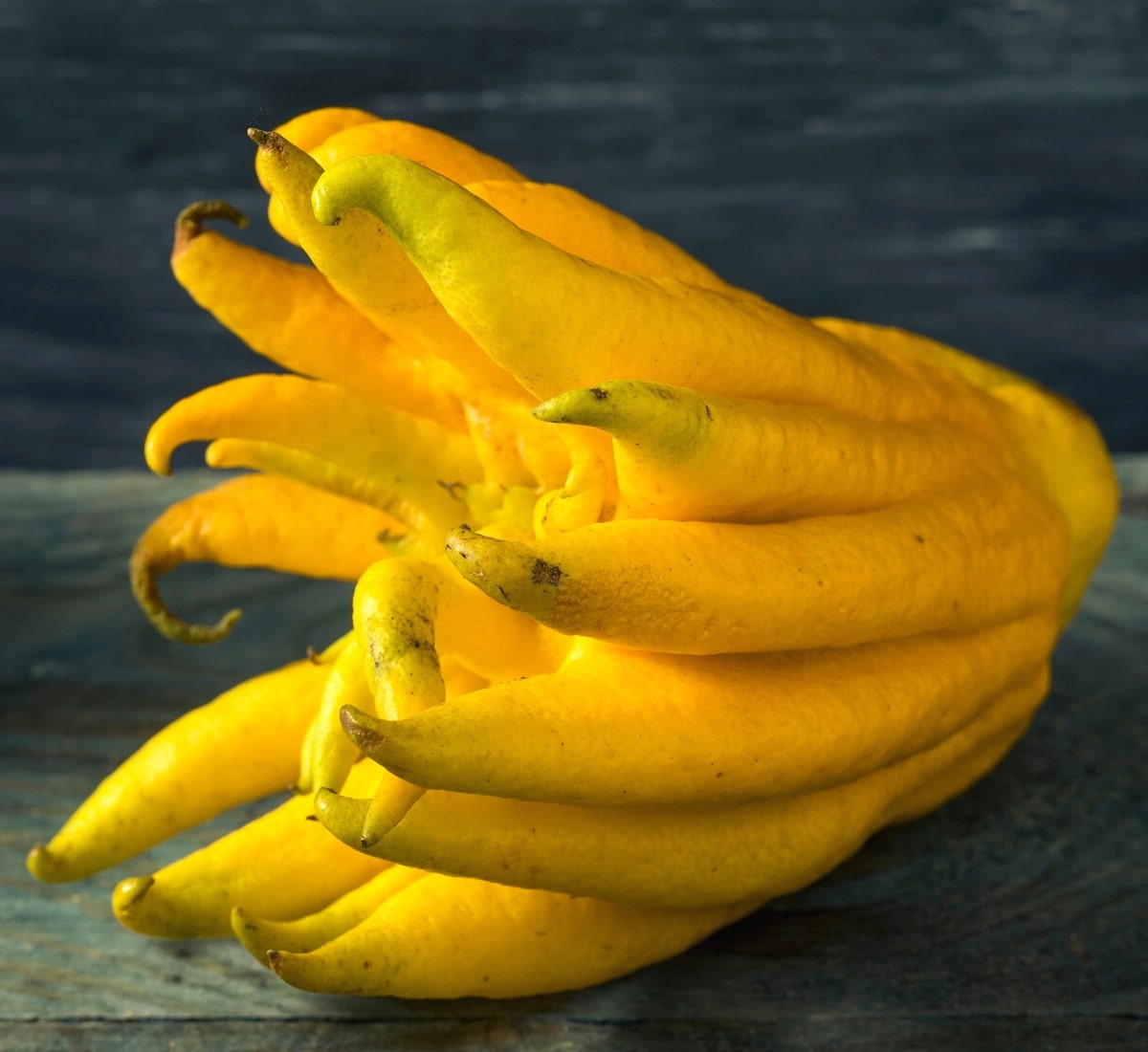
In the kitchen, Buddha’s hand is prized for its flavorful zest. The outer yellow rind has an intense citron flavor with notes of lemon and the bitterness of yuzu. Unlike most citrus fruits, the inner white pith is incredibly sweet and not bitter at all.
While most chefs utilize just the zest of this citron, the whole fruit is edible. It is occasionally eaten raw but more commonly boiled with sugar to create candied citron, marmalades, and other desserts.
Cutting and Preparing Buddha’s Hand
To zest Buddha’s hand, simply use your zester to scrape the yellow rind off the base and largest fingers. Be careful to support the fingers as you put pressure on them because they can break off quite easily.
To cut Buddha’s hand for use in desserts and savory dishes, follow these steps:
- Cut off the stem end from the base of the citron.
- Hold the fruit firmly against your cutting board and slice it in half lengthwise.
- Lay one half of the Buddha’s hand flat-side down on the cutting board.
- Slice it widthwise from the base toward the fingers. Make the slices as thick or thin as needed for the recipe. Very thin slices are the most typical.
- As you get to the fingers, expect the fruit to start to fall apart. Slice each finger separately as needed.
- Cut and discard any green parts from the slices, as these tend to be very bitter.
- Repeat this process with the remaining half.
Once sliced up, Buddha’s hand can be enjoyed fresh, as a garnish, cooked with savory marinades, or boiled with sugar and water to create a flavorful syrup.

Practical Tips
Now that you know how to cut and eat this incredibly peculiar citrus, here are a few more tips for selecting and working with Buddha’s hand.
Read my guide to fruits with yellow rind for more of these brightly colored fruits.
When is a Buddha’s Hand Ripe
Buddha’s hand fruits start off brownish-purple, mature to dark green, and then ripen to bright yellow. Look for fruits without any green tinting on the fingers or bud end (between the fingers).
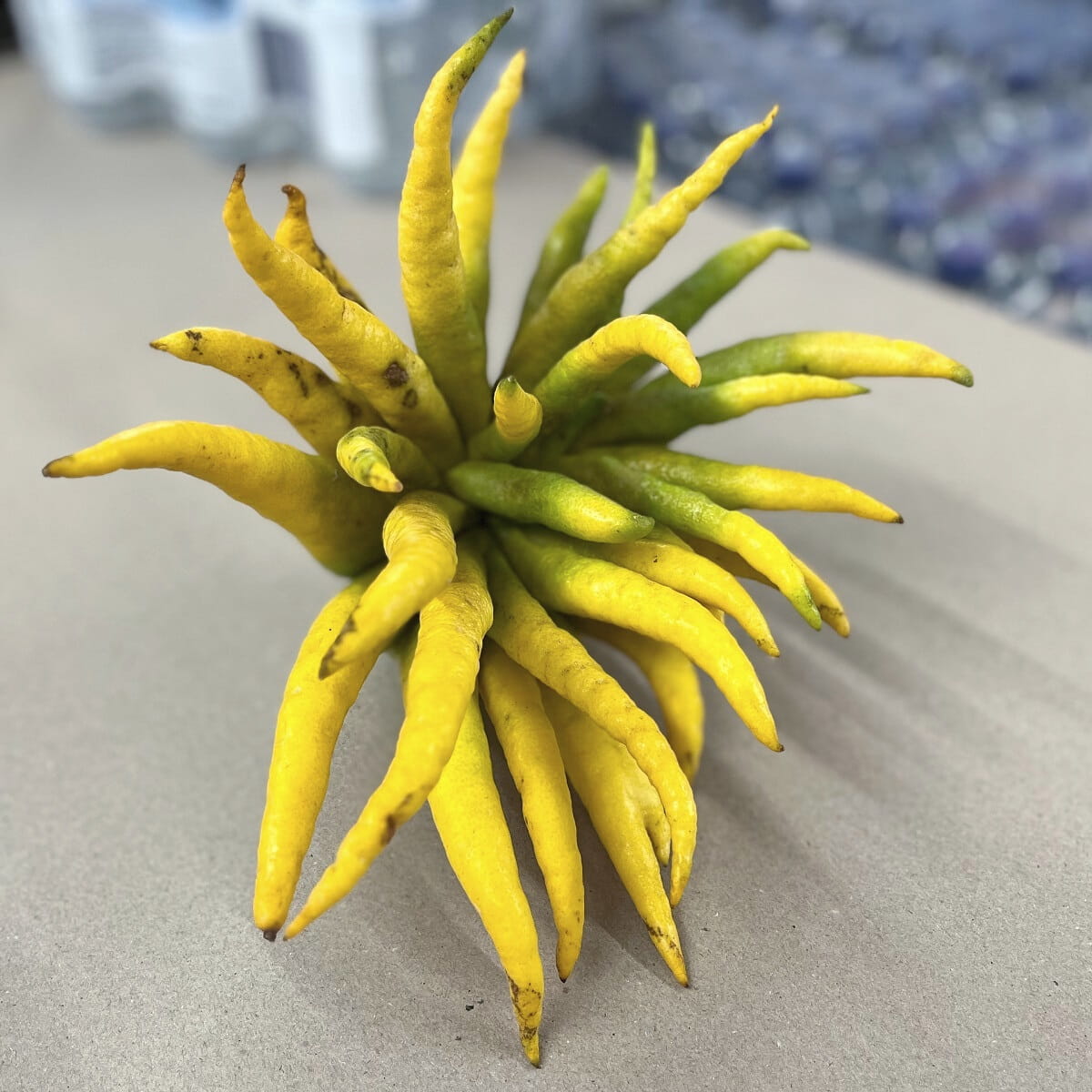
The finger lobes on open-hand varieties will spread outward as the fruit ripens. However, closed-hand varieties will continue to show tightly-packed fingers well after they’ve fully ripened up.
How to Store Buddha’s Hand
Like other citrus fruits, Buddha’s hand can be stored on the counter or in the refrigerator. On the counter, a ripe citron will last about two weeks. In the fridge, it will last up to a month.
You can also slice and store Buddha’s hand in the freezer if you end up with more than you need for your recipe. Simply put the slices into an airtight bag or container and use them within six months.
Buddha’s Hand Uses
Like lemons and oranges, Buddha’s hand is commonly used as a flavor enhancer. The bright yellow rind is zested or shaved into sauces, dressings, dips, and marinades to add a bit of fragrant sour bitterness.

The intense sweetness of the white pith also makes these fruits a great choice for including in jams, marmalades, and desserts. For these uses, the fruit is usually thinly sliced and boiled to remove the bitterness. It is then boiled again with sugar and added to the recipe.
Buddha’s hand is incredibly fragrant and perfumy. In fact, just setting one in a room can impart a wonderful lemony-lavender scent. This same fragrance can be captured by infusing alcoholic spirits, teas, and sauces with Buddha’s hand.
Nutrition
Like other citrus fruits, Buddha’s hand is high in vitamin C. It also contains trace amounts of calcium, vitamin E, and fiber.
One thing that Buddha’s hand has in abundance is essential oils. It contains coumarin, diosmin, and limonin compounds in high amounts, and these organic compounds are prized for their powerful, perfumey odors.
